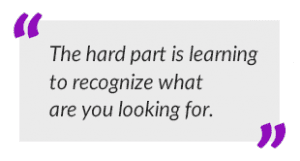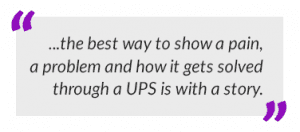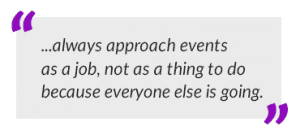With today’s blog post, we’re starting the eCommerce Talks series, which will include interviews with particularly interesting individuals. Their knowledge and experience can provide eCommerce businesses with advice on how to improve their odds in this competitive field. We’re starting with Alex Barrera and the underestimated power of storytelling.
If you attend startup and technology conferences, chances are you have heard about Alex Barrera. As a co-founder of Tetuan Valley, a startup school as well as community for entrepreneurs located in Madrid, Alex often participates in the most popular events as a keynote speaker. But Alex is also a founder and CEO of Press42, an agency that specializes in the use of storytelling for brands, and Tech.eu, a major source of news about the European technology scene.
We talked with Alex about his views on eCommerce startups, storytelling and the ever-present conferences and events for startup companies.
Polcode: As a co-founder of Tetuan Valley, you helped many startups on their way from conception, through the validation phase and to market debut. Do you believe that there are some particular inherent difficulties to making it as an eCommerce startup?
Alex: Definitely. eCommerce is a tough space. There is plenty of competition. Essentially you’re moving goods through the Internet and there are plenty of run of the mill solutions to do that. The key aspect of any eCommerce is how to differentiate yourself. Amazon has an amazing recommendation engine (among other things). Zappos has an incredible corporate culture and customer service, etc. Finding that key that takes your eCommerce from regular to operative excellence isn’t easy.
From your experience, how did the best eCommerce startups go about validating their business idea before they actually built their entire platform and invested a considerable amount of money in it?
One word, data. Most of the eCommerce startups I find are pretty rudimentary. They might have a set of products that sell reasonably well but very rarely I see them going beyond basic analytics. In the super competitive world we live in, data is key. Without good data and good analysis of it, eCommerce will most surely die. Measuring everything, designing good tests and learning from it are the keys to make it through.

Some believe that when a product is good, it will sell itself. But we know that a quality eCommerce platform can do wonders for the customer’s willingness to make a purchase. As a founder of Press42, you probably think the same of storytelling. What exactly should brands understand by “storytelling”?
Storytelling is the art of designing and sharing great stories. While any product might be good in itself, research shows that adding stories to our products increase their value perception. A good story might make all the difference. That said, the story is much more than mere branding. Alternative can be: It’s also about the eCommerce’s corporate values, about how they handle crises, failures or crazy customers. It’s about showing the world how amazing the company is, allowing for better recruiting and in the end, getting that edge that makes all the difference.
According to a popular catchphrase, storytelling is saying “two plus two” instead of four. In practice, it means that brands are to give their audience pieces of information in a way that will compel them to solve the puzzle and arrive at a conclusion that is in line with what the brand ultimately wants them to do – purchase their product or service. How can a brand possibly “engineer” such a complex correlation?
The problem with storytelling is that, as I said, it’s not a science, but an art. We can engineer certain things but other parts need to be authentic. It’s actually not hard to find or “engineer” good stories. The hard part is learning to recognize what are you looking for. Often people tell me they don’t have any cool stories about their company. After the second coffee with them we can normally take two to three amazing and authentic stories that happened at the company. The key here is to mix engineering with authenticity. If you’re looking for a specific goal and you try to insert the stories into that, it won’t fly.

Storytelling can be realized through social media or press releases among many other things. But another obvious place that should contribute to the story is the website. How can the story be expressed through the website’s design or content?
A story has many different channels. It can be shown in the design, in the story attached to the products, the section, or even how you define the buying process. It can also be used on different channels like taking official pictures and creating stories with them on Instagram, or adding a company blog where you feature, for example, customer stories, employee stories, etc.
The Unique Selling Proposition (USP) is a classic concept that almost every eCommerce business uses that may involve some storytelling. How do you think USP and storytelling go together?
Storytelling is always the best way to explain or highlight a problem. There is a well-known quote in the story industry which goes like “Don’t tell me, show me.” Well, the best way to show a pain, a problem and how it gets solved through a UPS is with a story.

A quick review of what your Press42 does shows that storytelling is not just about customers, it’s also about the employees. How can storytelling be used to improve the performance of an eCommerce team?
The story is a critical part of the company’s internal communication efforts. Most of the failures I see in companies is due to a lack of proper communication. Obviously, when you’ve got five employees, this shouldn’t be an issue. When the company starts growing massively, this is the number one challenge. Using stories to motivate, to lead, to engage and to share the founder’s values about life with the whole organization is key to build a healthy working environment that not only tends to outperform the industry, but that it helps with retaining amazing talent.
You are a bit of a techie yourself and you’re also interested in big data. Is it possible to use data to help inform your storytelling efforts?
Absolutely. As companies move to a more data-driven approach across all of their processes, marrying data and stories is becoming increasingly important. People have a hard time understanding that data per se, is useless. What’s really valuable is being able to inspire someone (the board, the customer, the employees, the providers, etc.) with not only a chart, but a whole compelling story on how that data fits into the holistic picture of the company and makes a big difference.
Many people know you primarily as a keynote speaker at many international conferences. What do you think eCommerce startups may gain from participating in top startup events?
I’m always very honest about this. There are startups that should participate in events and others that shouldn’t. Generally speaking, after more than a decade being on a stage I can say that attending events is our number one lead generator by far. Then again, startups shouldn’t go to events to slack around or listen to talks. They should do both but they should also keep in mind they’re there to achieve certain goals. If done correctly you can gain many things: exposure, PR, great connections both with press, other startups, investors and potential customers, knowledge, partnerships, advice, etc. My advice is to always approach events as a job, not as a thing to do because everyone else is going. Set up goals, work on an agenda ahead of time and execute it. As they say, work hard, play hard.

When is the right moment to stop testing your idea and get serious about turning it into an actual product? When should an eCommerce startup take a risk and build a full featured eCommerce platform for their idea?
I would say this is like love. You know it when you see it. It’s hard to give a specific answer here. Each startup founder is different. In my case, a good clear sign is when people ask you how much it is and when can they pay you. That’s a clear sign people want what you’re doing. The thing is, when you do enough startups, you realize you’re always on building mode. You try stuff, gauge the reactions and iterate. There is no aha moment, it just happens organically. One day you’re just goofing around, and the next weekend your machines are going down in flames due to traffic. Blessed problem!
And what is the next episode in your very own story? Do we get to see you soon at a conference?
So, currently I’m MC-ing several events, including two in Berlin and one in Madrid. As to what’s on my plate now, we’re working hard on bringing cutting edge technology into the content space and also exploring the potential for VR storytelling. It’s still early on, but we’re fascinated with the potential applications.
On-demand webinar: Moving Forward From Legacy Systems
We’ll walk you through how to think about an upgrade, refactor, or migration project to your codebase. By the end of this webinar, you’ll have a step-by-step plan to move away from the legacy system.

Latest blog posts
Is Your E-commerce Business Ready for the European Accessibility Act?
Jun 16, 2025 by Janusz Toczko
Legacy Software and Security Risks: Why Regular Audits Are Your Best Defense
Jun 4, 2025 by Jerzy Zawadzki
Magento Enters the SaaS Arena: What Adobe Commerce as a Service Means for Your Business
Apr 24, 2025 by Jerzy Zawadzki
Ready to talk about your project?
Tell us more
Fill out a quick form describing your needs. You can always add details later on and we’ll reply within a day!
Strategic Planning
We go through recommended tools, technologies and frameworks that best fit the challenges you face.
Workshop Kickoff
Once we arrange the formalities, you can meet your Polcode team members and we’ll begin developing your next project.


